You Asked. We Acted.
You Asked. We Acted.
Feedback from users like you inspires us to improve the experience our customers and partners have with us, our services, and our products.
Have feedback that you'd like to share with us? The Customer and Partner Experience team works to share your feedback with teams that can help. Email us at cpx-team@redhat.com with ways for us to continue to improve.

CentOS to RHEL - Simplified and Seamless
With CentOS Linux 7 reaching end of life on June 30, 2024, organizations running CentOS Linux must migrate to a new operating system to continue receiving updates, security patches, and new features. To ease your migration from CentOS Linux to Red Hat Enterprise Linux, we've created additional resources to prepare new and existing customers for a seamless migration.

Upgrade RHEL for better support, stability, and capabilities
Red Hat Enterprise Linux (RHEL) 7 will reach end of maintenance support on June 30, 2024, hence it is important for our existing and new customers to plan their upgrade activities to the latest versions of RHEL. Customers have indicated the importance that upgrading is not stressful or disruptive. As a result, Red Hat has developed resources, tools, and consulting offerings needed for customers to keep their systems running.

Training course lab access extended for continuing skill development
Lab access for Red Hat training courses* that include a virtual training environment or associated lab has been extended to 45 days after the end date of the class. This change is directly related to feedback from students that old lab timeframe (not defined, typically cut off within a week) was too short to further develop skills from courses. *There are a few courses the extension doesn't apply to which are outlined in the linked blog.

Two-factor authentication is available for customers
Red Hat customers and partners have been asking for two-factor authentication. Red Hat has delivered the ability for customer organization administrators to require two-factor authorization—a widely accepted and industry standard to provide an additional layer of security along with passwords—for all users in their organization.

Improved Technical Documentation User Experience
All technical documentation on the Red Hat Customer Portal recently received a facelift based on customer feedback. Notable areas of improvement include improved readability, accessibility, responsiveness, and interactivity.

Partner Training Portal Improvements
The Partner Enablement team has kicked off several initiatives to improve the Partner Training Portal based on responses from this year’s Partner Training Portal Annual Survey. Improvement initiatives include a new homepage design, an onboarding welcome email, and a review of content tagging. All enhancements are driven by partner feedback and will make it easier for partners to find the enablement they need.
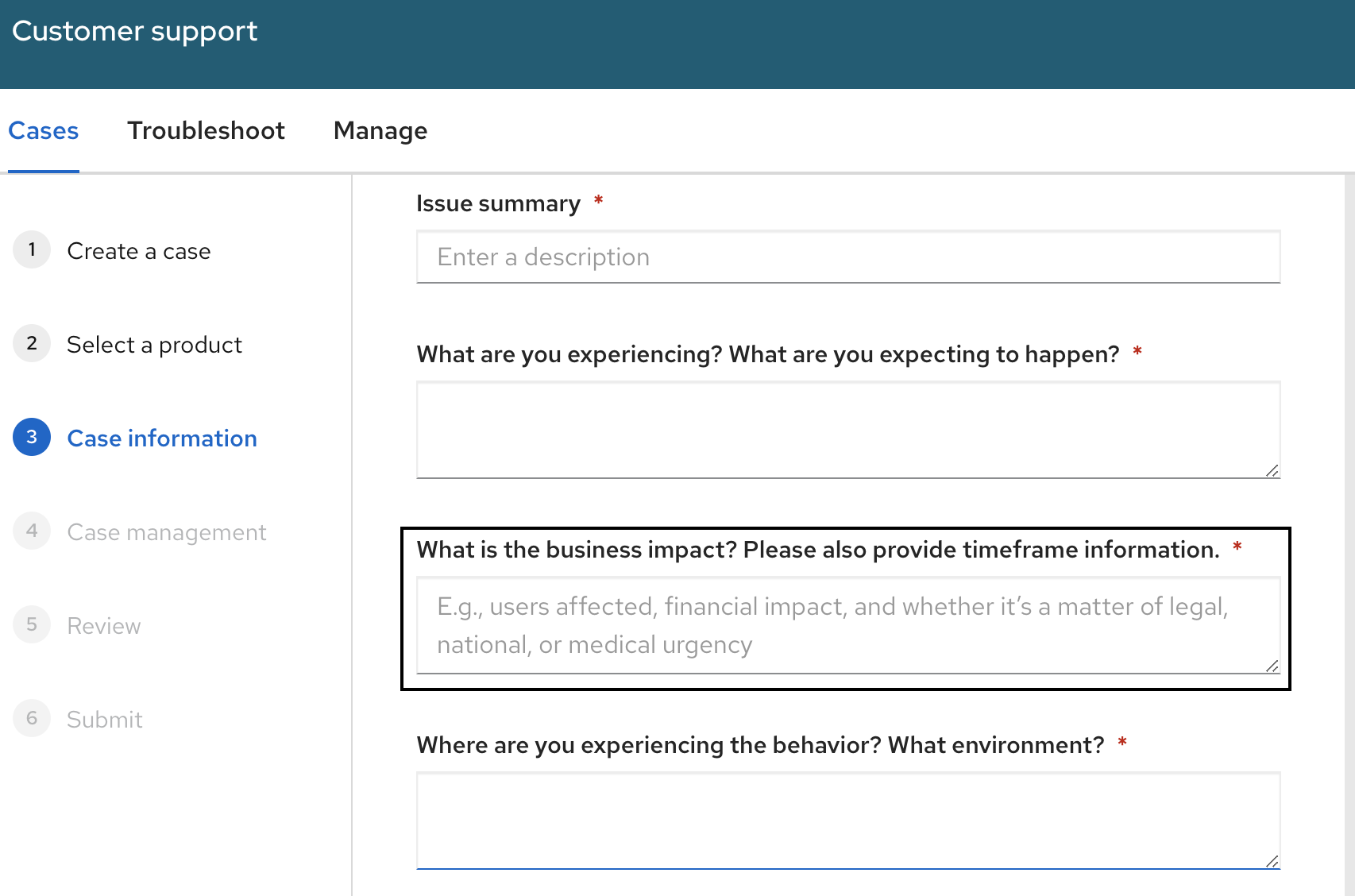
Better Understanding the Business Impact of Customer Support Cases
Customers have expressed how critical it is that Red Hat understands and prioritizes their support cases based on business impact. To better understand this, customers can now indicate business impact while creating a support case, when requesting an escalation, and when updating the severity of a case. A question has also been added to the Customer Effort Score (CES) survey that allows customers to indicate whether or not they felt that the technical engineer understood the business impact of their case once closed.

Getting Started with OpenShift Container Platform
Red Hat OpenShift Container Platform customers requested an action-oriented, guided experience for new users to get started with OpenShift using the web console and the CLI. As a result, a new document was created that includes definitions for common terms found in Kubernetes and OpenShift Container Platform. The documentation also contains a walkthrough of the OpenShift Container Platform web console, as well as tips for creating and building applications by using the command-line interface.
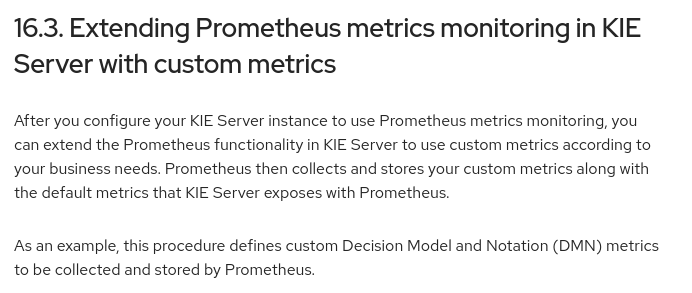
Extending Prometheus metrics monitoring in KIE Server with custom metrics
Customers were looking for additional guidance on how to extend Prometheus metrics monitoring in KIE Server in our Red Hat Process Automation Manager (RHPAM) documentation. Given that the steps for setting it up can be slightly different in OpenShift, our Red Hat product documentation team added in additional steps to our RHPAM 7.11 documents.
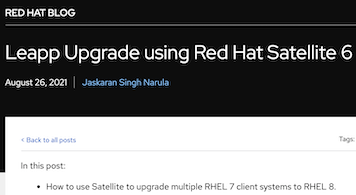
Leapp Upgrade using Red Hat Satellite 6
The release of Red Hat Satellite 6.9 has improved the upgrade process for Red Hat Enterprise Linux (RHEL). Leapp upgrades can now be applied to the clients of the Satellite infrastructure. The Red Hat Support team identified the major pain points that customers experienced with their Leapp upgrade and provided information on how to address them in the linked blog.

Red Hat Ansible Tower documentation gets a version selector drop-down
With multiple Red Hat Ansible Tower versions available, customers faced issues finding and selecting the correct documentation for their version. To improve ease of navigation, a drop-down version selector menu has been added to Red Hat Ansible Tower documentation. This eliminates the need for customers to manually update the version number in their URL and makes relevant resources available with the click of a finger.
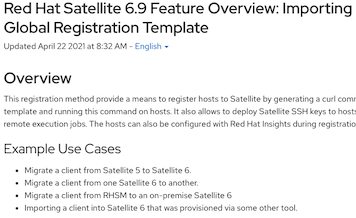
Enhanced self-support resources for Red Hat Satellite registration
With the release of Red Hat Satellite 6.9, the process of registering a client system has been simplified by incorporating the global registration template. Registration is now easier, more secure, customizable, and has fewer steps. Prior to the release, Red Hat Support worked to identify major pain points customers may have with the registration process and created additional knowledge articles to assist customers with troubleshooting. These articles will help customers resolve their issues quickly and without having to open a support ticket.

Convert2RHEL is now fully supported
Convert2RHEL is now an officially supported component of Red Hat Enterprise Linux (RHEL). Historically, Convert2RHEL was a self-support or consulting-supported utility. The tool allows users of RHEL derivatives, like CentOS, to convert their systems to fully supported RHEL machines. This will allow customers to easily migrate to stable and secure RHEL systems, while retaining existing applications and configurations.
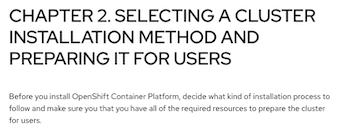
Red Hat OpenShift Container Platform documentation improvements
Customers requested more end-to-end content and better findability in Red Hat OpenShift Container Platform documentation. In the 4.7 release, the Red Hat product documentation team added planning content to direct users to their best installation path. We also improved the Amazon Web Services (AWS) guidance by adding more planning details, verifications steps, and post-installation content. To improve findability, we added a page that highlights useful content based on user job roles.

Improved accuracy of security vulnerability scans
A frequent concern raised by almost all our customers and partners is the validity of vulnerability scans and back-and-forth discussions around so called "false positives" in these scan reports. The validation and remediation of security vulnerabilities is a critical business function. The Red Hat product security team worked with our partners to improve the accuracy of vulnerability scans and have established a scanner certification to help ensure that accuracy and consistency across certified partners.

No-cost Red Hat Enterprise Linux (RHEL) program expanded
Red Hat recently (re)introduced "no-cost RHEL for small production workloads" and "no-cost RHEL for customer development teams." Red Hat has had no-cost RHEL programs for a long time, but it was limited to single-machine developers. Now, that has been expanded and it can be deployed in production on up to 16 systems. It is a completely self-supported new offering and should help users affected by the CentOS stream changes.
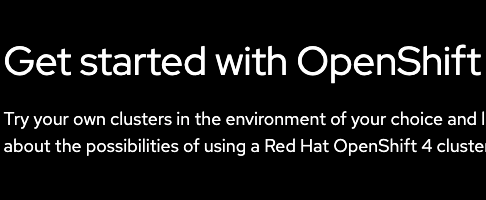
Redesigned Red Hat OpenShift "try" experience
Customers told us there were too many obstacles to be successful while trying out Red Hat OpenShift. To ensure customers are on the right track in their "try it" journey, we reassessed the best ways to get started with the product. As a result, the OpenShift Try page was created as a one-stop shop to provide a guided "getting started" experience.
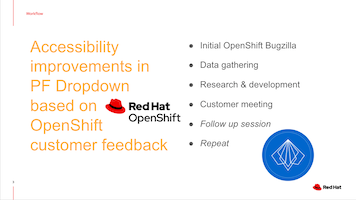
Red Hat OpenShift and PatternFly accessibility improvements
A non-sighted customer using a screen reader was unable to complete his OpenShift task due to incomplete accessibility support within a dropdown component within the product. The reader activated the dropdown, sourced from PatternFly (Red Hat's open source design system), but the component didn't shift focus into its items, preventing proper data presentation. Based on that customer interaction, PatternFly and Red Hat solved this accessibility issue, fixing it in turn for OpenShift and other platforms that use the component.

Red Hat Customer Portal: Flexible customer content pilot
Customers have asked for Customer Portal content improvements ranging from findability to presentation and more end-to-end content. In response, we’ve announced a pilot for a subset of Red Hat Enterprise Linux documentation including new functionality, such as: more portable content that can be flexibly combined into different formats and documents, enhancements to both search on the Customer Portal and external search engine optimization, content that follows end-to-end user workflows, and more. Check back as we enhance this pilot effort and enable a more flexible customer content experience overall.
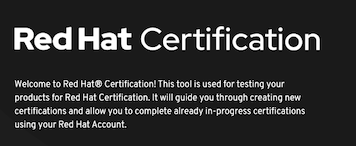
Improving product certification engagement using new Red Hat certification tool
The Red Hat Certification team released hosted Red Hat Certification (rhcert), an officially supported interface for Red Hat partners to offer increased visibility and access to their product certifications. The result of feedback from a varied set of partners during a journey mapping exercise, this hosted solution lowers the barrier to entry for non-testers within the partner organizations who don’t necessarily need to execute tests but only wish to monitor certifications.

New documentation on configuring and managing cloud-init
Cloud-init is an important component of a number of Red Hat cloud offerings, including Red Hat OpenStack Platform, Red Hat Virtualization, and Red Hat CloudForms. While documentation on configuring and using this tool as a component of these products is available, customers often requested a more complete reference that describes settings and usage. In response to this feedback, the Red Hat Enterprise Linux documentation team created a full reference and usage guide.

New in Red Hat Satellite 6.8 documentation: Instructions for updating disconnected Satellites
Due to some changes in previous versions of the product, documentation on upgrading and updating disconnected Satellites was not as detailed compared to the use cases for connected Satellites. After hearing concerns from customers with primarily disconnected set-ups, we added detailed instructions on upgrading and updating disconnected Satellites to the product documentation.

Improving partner engagement: Red Hat Technology Partner Success Desk
We are pleased to announce the availability of the new Technology Partner Success Desk (T-PSD), a free service where our technology partners can ask questions pertaining to Red Hat offerings, partner programs, product certification, engagement process, and more. Whether you are an existing Red Hat Partner using our products and technologies to build and certify for, support, and/or to interoperate with our platforms or are a prospective partner, use this service to ask questions throughout your journey. We’re providing this service to simplify the Red Hat partnering experience with the goal of achieving stronger relationships.

Security flaws and CVSS rescore process with NVD
The Red Hat Product Security implemented a feedback loop for security flaws to address customer situations where the difference between Red Hat and NVD assigned CVSS scores is large. As a result of this CVSS re-score process with NVD, our customers now have a better understanding of the impact and risks associated with security issues.

Supercharged search in Red Hat OpenShift 4.4
The Red Hat OpenShift User Experience Design team gathered feedback from product users about search page functions in the console user interface and used that input to launch big enhancements to the search experience. Specifically, a "supercharged" multi-resource search has been added to OpenShift 4.4 to allow users to view multiple resources at a time and apply filters across different resource types at once.

Topology view improvements in Red Hat OpenShift 4.4
Over the course of several months, the Red Hat User Experience Design team engaged with product users to collect input on the Topology View in Red Hat OpenShift. The team used that input to make eight substantial improvements to the Topology View experience in OpenShift 4.4.

New documentation feedback feature for Red Hat build of Eclipse Vert.x
Our documentation feedback feature is now available for Red Hat build of Eclipse Vert.x 3.8.5 and 3.9.x product documentation. To provide your feedback, highlight the text in the document and add your comments.

New documentation: Installing certificates on a print server
From a discussion within our Red Hat Customer Portal community, we identified that customers would appreciate documentation on installing CUPS certificates. Based on this feedback, we created new documentation to cover this use case.

Red Hat OpenStack Platform 16
Incorporating customer feedback, Red Hat OpenStack Platform 16 introduces more than 1,000 enhancements and new features that lay the foundation for enterprise and telco workloads. With this release, customers continue to benefit from a secure, robust and integrated Linux operating system with Red Hat Enterprise Linux and a simplified Day-2 operations framework.
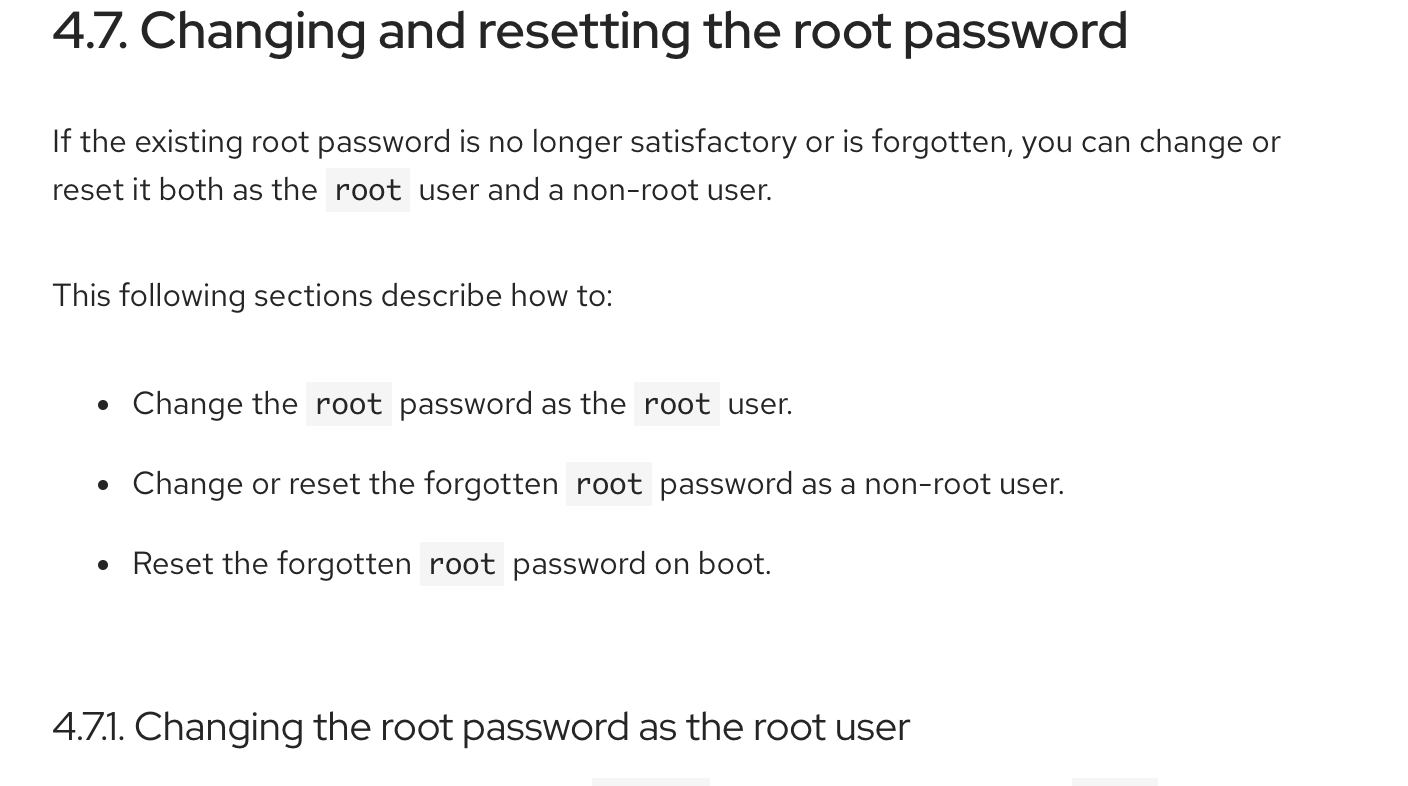
New documentation on how to change and reset the root password
As a result of customer feedback, the Red Hat Enterprise Linux documentation team learned that changing and resetting the root password is an important use case that should be documented in greater detail. Therefore, we have improved the documentation to provide procedures for changing and resetting the root password for various types of users (root/non-root) and under different circumstances.
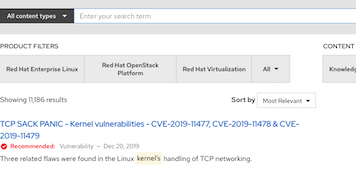
Customer Portal search enhancements
The search team has added two new features to reduce the number queries resulting in 0 results and help our users find answers more easily. The "Did you mean?" feature focuses on misspellings and redirects users to the intended content. Related searches provides examples of more specific queries when users enter one word or low intent keywords or phrases, leading to richer result sets.
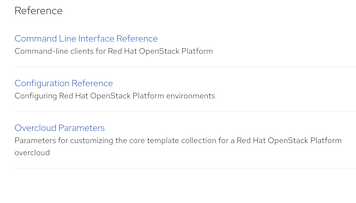
Restored production of Red Hat OpenStack Platform CLI and configuration reference manuals
These two reference manuals were discontinued several releases ago, but customers continued to request them and highlight how important the information was to them. We created automation to pull the information directly from the software to compile the manual content. With a little bit of manual editing, the books are more up to date and current now than they were in the past.

Comprehensive flow matrix information for Red Hat OpenStack Platform
Past flow matrix tables for Red Hat OpenStack Platform were not as complete and comprehensive as customers wanted. A combined effort with customer partners verified the desired format and data, and then Red Hat internal teams compiled all the data for all services to successfully deliver the matrix customers have wanted.
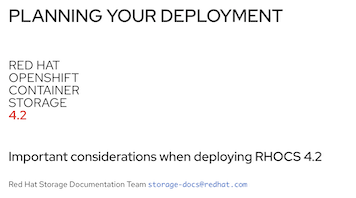
New pre-deployment planning recommendations for Red Hat OpenShift Container Storage
Red Hat OpenShift Container Storage customers requested clarity regarding architecture, supported configurations, infrastructure/software requirements, and sizing/scaling recommendations prior to deploying the product. In response, we delivered a new "Planning your deployment" document for the OCS 4.2 release to resolve planning-related questions and help prevent post-deployment issues due to insufficient pre-requisite information.

Assessing RHEL 7 upgradeability to RHEL 8 using the web console
This newly added document provides sought-after information on how to assess the readiness of a Red Hat Enterprise Linux (RHEL) 7 machine, in the comfort of a web user interface, in preparation for the in-place upgrade to RHEL 8.

Improved user management capabilities in the Red Hat OpenShift 4.3 Console
In the OpenShift Console version 4.3, we’ve added more capabilities around viewing and editing user management resources, including dedicated pages to view Users and Groups for the cluster. Admins can now impersonate users to see the console exactly how a user with those permissions would, making it easier to test and troubleshoot.

New text formatting in case comments
In response to customer feedback, we’ve introduced basic text formatting options (such as bold, italics, unordered lists/bullets, H1 and H2) when composing a comment on a support case. Plain text comments are also still supported.
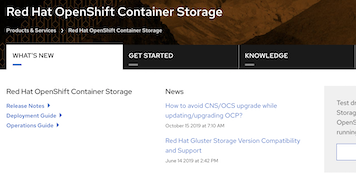
Improvements to Red Hat OpenShift Container Storage
This release delivers important improvements to Red Hat OpenShift Container Storage 3, including increased scalability, performance enhancements, stable device mapping, longer PVC names, and stability enhancements.

Improvements to Red Hat Learning Subscription
Based on customer feedback, the latest public release (v4.0) of the Red Hat Learning Subscription (RHLS) provides an improved learning experience for our users and creates a foundation to bring continuous, iterative improvements to our customers. Some key features of this release include expanded search and filtering, a new interface, expert chat, and enhanced reports.

Enhanced content for example decisions in Red Hat Decision Manager
Learning to use a business automation software product such as Red Hat Decision Manager is much easier with examples. The example decisions in Red Hat Decision Manager were previously described only in outdated Drools community documentation, but are now documented more fully and clearly for both Drools community and Red Hat Decision Manager users to be able to get off the ground quickly with their decision-management systems.
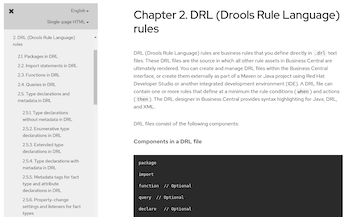
Enhanced content for Drools Rule Language (DRL) in Red Hat Decision Manager
Drools Rule Language (DRL) is the time-tested business rule language at the core of nearly all rule assets in Drools and in Red Hat Decision Manager. Based on customer feedback, we have greatly expanded the DRL reference content for both Drools community and Red Hat Decision Manager users to be able to write and implement effective DRL rules in complex rule systems.
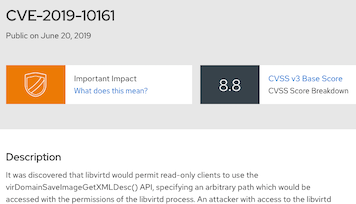
New and improved CVE pages
After receiving feedback from our customers about our Common Vulnerability & Exposure (CVE) pages, Red Hat has worked to improve the content and presentation of this critical security information. The goal was to provide the most valuable content and data for users assessing CVEs that potentially impact their business.

New visual signposts to illuminate paths from Red Hat training to certification
With so many courses, exams, and related offerings to choose from, visitors need guidance to pinpoint the right learning journey for them. We created learning paths as a wayfinding tool for prospective students, giving them a visually compelling representation of how to get where they want to go.

Improved ease of use and findability of Ansible documentation
Customers expressed difficulty navigating between versions of Ansible documentation, as well as trouble viewing Ansible documentation on mobile devices. In response, we revamped the Ansible documentation site to provide a version dropdown menu and added breadcrumbs to improve navigation. We also updated the site with a more responsive design that is easily viewable now across a range of devices, including mobile.

New feedback feature for EAP 7.2 and 7.3 Beta documentation
Now available in Red Hat JBoss Enterprise Application Platform (EAP) 7.2 and 7.3 Beta product documentation, direct feedback is a feature that allows you to submit comments directly within documentation. Simply highlight sections of a document and attach comments.
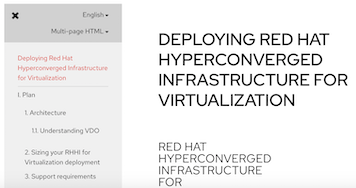
Improved deployment end-to-end workflow
Red Hat Hyperconverged Infrastructure for Virtualization 1.6 (RHHI-V) customers faced deployment challenges due to deployment documentation containing multiple cross-references to associated products. The workflow has been restructured to eliminate the cross-references and streamline the user experience.

Deploying Red Hat OpenStack Platform at scale
Based on customer requests, especially from telecommunications, we have published new technical information about large deployments of Red Hat OpenStack Platform (OSP). This includes recommended specifications, deployment practices, and debugging tips. The new book, entitled “Recommendations for Large Deployments” is available for OSP 10, 13, and 14.

Customer-driven improvements to the OpenShift experience with Red Hat Data Grid
In response to customer feedback, the Red Hat Data Grid 7.3 release includes a revised "Red Hat Data Grid for OpenShift" guide with fully-validated, task-based content and working code examples for more use cases. The release also includes a set of OpenShift quick start tutorials for Data Grid, co-authored by the Red Hat engineering and documentation teams, that demonstrate simple hello-world examples and more complex use cases like cross-site replication.

Easy-to-access integration
Customers gave feedback about the value of an integration offering eliminating the need for installation, configuration, and operational management. In response, we created a new product offering, Red Hat Managed Integration, to make it easier than ever to access integration capabilities from Red Hat. Completely removing install and configuration time, customers can start integrating their systems with confidence faster, while Red Hat manages their platform. Additionally, solution architects can now start building proofs of concept within a day for customers.

Customer Portal OneBox Changes
The OneBox is a feature for the Customer Portal’s search application that provides additional content, information, and links based on what the customer is searching. We added new templates to reflect the unique aspects of some of our products. For example, the OneBox now has a unique template for product suites and for security vulnerabilities. These custom templates display what customers have noted as the most important information.

Resolved scaling issues with Red Hat Gluster Storage
Red Hat Gluster Storage customers pushing the limits of our supported scaling were struggling. In response, we evaluated, identified, and addressed a major bottleneck. Due to architectural limitations in the way Gluster data was distributed across data centers, customers were not able to scale out their storage in Red Hat OpenShift Container Platform. We implemented a design change that resolved the issue.

New product page for Red Hat OpenShift Container Storage (OCS)
Prior to the OCS 3.9 release, customers had to look for product information in either the Red Hat Gluster Storage or Red Hat OpenShift Container Platform product pages. This scenario did not provide a dedicated, scalable source of information for the growing number of OCS customers, so we created an OCS product page to simplify and centralize the product information.
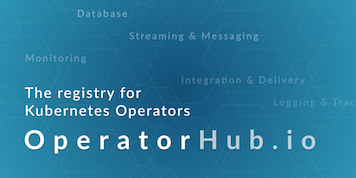
Availability of OperatorHub.io
The introduction of OperatorHub.io solves a critical pain point for our user base: finding services that are operationally ready for Kubernetes - or otherwise, backed by an Operator. Just as important, OperatorHub.io is of strategic value to our product plans. OperatorHub.io listed Operators are packaged so that OpenShift deployment is a single command. The registry also establishes a pool of services to certify on OpenShift with added value such as automated updates, first line Red Hat support, and container factory scanning that will only be available on OpenShift.

Unified integration platform for cloud-native application development
Red Hat is expanding its integration product portfolio with new components and capabilities for connecting applications, data, and devices across hybrid architectures. The additions are featured in the latest release of Red Hat Integration, and include Red Hat AMQ Online, Red Hat AMQ Streams, new connectors for Red Hat Fuse Online, and end-to-end application programming interface (API) lifecycle support

Red Hat CloudForms 4.7
CloudForms 4.7 represents the next step in our journey to extended datacenter infrastructure control with improved integration with Red Hat Ansible Tower, Red Hat OpenStack Platform, Red Hat Virtualization and physical providers for Lenovo XClarity, Nuage, and Redfish.

Red Hat Container Development Kit (CDK) 3.7
Based on Red Hat Enterprise Linux, this development kit provides a pre-built container development environment to help you develop container-based applications quickly using preconfigured and local versions of OpenShift. The containers you build can be easily deployed on any Red Hat container host or platform, including RHEL, Red Hat OpenStack Platform, and Red Hat OpenShift Container Platform.

Red Hat OpenStack Platform 14
Based on the community “Rocky” release, Red Hat OpenStack Platform 14 delivers a range of new features and enhancements including expanded integration capabilities with Red Hat OpenShift Container Platform, integration with Red Hat Ansible Automation, processing scalability for graphics rendering and artificial intelligence workloads (tech preview), and improved storage availability, management, data migration, and security.
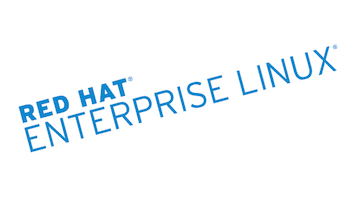
Red Hat Enterprise Linux 7.6
Powering business applications with control, confidence, and freedom, Red Hat Enterprise Linux 7.6 provides a consistent foundation across the open hybrid cloud and offers key new and enhanced features which emphasize innovations in security and compliance features, management and automation, and Linux containers.

Introducing OpenShift Operators
OpenShift 3.11 introduced a first round of Operators, providing automated operations for complex applications deployed on OpenShift. Initial operators included MongoDB, Redis, Crunchy Data for PostgreSQL, Couchbase, etcd, and Prometheus. These operators encapsulate years of hard earned operational experience from the vendors and experts behind each. In 2019, we are going to see this paradigm expand across the Kubernetes landscape, including the use of operators to automate management of OpenShift itself.

Make a Kubernetes Operator in 15 minutes with Helm
We delivered the Helm operator kit, making it easy to wrap existing Helm charts in an operator in order to deploy and manage a Kubernetes application using the Kubernetes APIs and kubectl tooling without having to write any Go code.

Multi-AZ cluster support with OpenShift Dedicated
OpenShift Dedicated added support for Multi-AZ stretched clusters that allow for cluster deployment across multiple availability zones (AZ). This helps to maximize service availability for product systems and applications. In addition, Dedicated added support for additional EC2 instance types including memory-optimized, compute-optimized or general purpose, which can be sized to meet specific needs. Additional enhancements include Bring Your Own AWS Account, Encrypted Storage Volumes, and Greater Admin Visibility.

pNFS SCSI layout fully supported as of Red Hat Enterprise Linux 6.4
Both client and server for the pNFS SCSI layout are fully supported. This requires shared storage access via a SCSI device for all client nodes that wish to use the pNFS SCSI feature. It also requires an XFS filesystem on the server side.
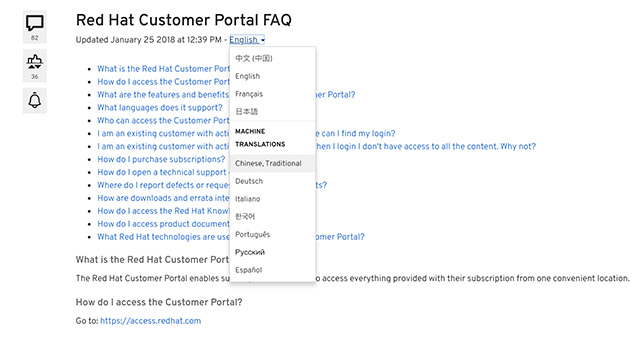
Native language troubleshooting content on demand
Solution and article content in the Customer Portal knowledgebase now allows users to dynamically generate translations in ten different languages, vastly expanding the volume of localized content available to our global customer base. When viewing a solution or article, simply select the language selector under the title.

Dynamic network access for long-running processes
In direct response to customer requests, RHEL 7.5 includes a rebase of the network resolver code in glibc, which enables RHEL 7 to dynamically reload/etc/resolv.conf when changes are detected. This allows truly dynamic network access for long-running processes. Other resolver improvements in this release allow more search domains in addition to numerous bug fixes.

Strengthening capabilities for intelligent, compute-intensive applications
In OpenShift 3.9, the device plug-in graduated from alpha to tech preview. With OpenShift 3.10, the device plug-in is now generally available and allows vendors to easily register devices such as GPUs or FPGAs for performance-sensitive workloads. Red Hat worked with key partners such as NVIDIA in bringing this feature to Kubernetes for GPUs. Additionally, OpenShift 3.10 enables self management of cluster components and minimizes direct host management by delivering control plane components as static pods and providing TLS node bootstrapping.

New improvements for Red Hat Satellite
Red Hat Satellite 6.4 continues to provide enterprises with a rich and stable method for managing their Red Hat Enterprise Linux environment. Further complemented by and integrated with Red Hat Insights and Red Hat Ansible for fully automated identification and remediation of stability risks, misconfigurations, and security threats, Red Hat Satellite offers customers differentiated management solutions unlike any available on the market today.
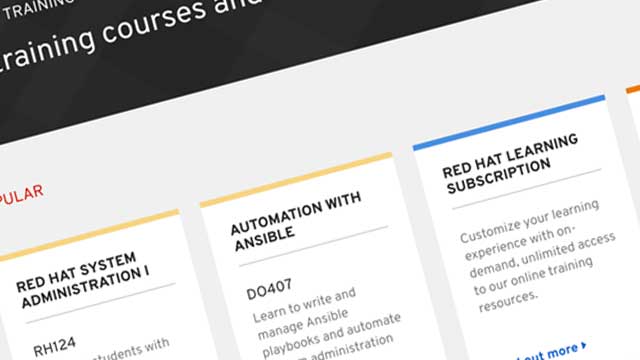
Improved usability and findability of Red Hat training courses
On this most-trafficked page for Services, users had to scroll to find all courses and exams we offer. We are releasing an improved page with helpful features that allow users to filter to find the courses and exams they are interested in.

Launched next version of RedHat.com homepage
Based on customer feedback, we now better explain what Red Hat is and does, and introduce new users to our product portfolio directly on the homepage. The team has reviewed the first 30 days of data and we’re optimizing this version now.

Ability to renew subscriptions online
Red Hat is adding capability for customers to better manage and renew their subscriptions in Red Hat Subscription Management(RHSM) on the Customer Portal. Customers will be able send alerts directly to their local Red Hat account managers (to help with complex renewals), or process their renewal online directly with Red Hat (for smaller and more simple renewals).

New Customer Portal product page for Red Hat OpenShift Container Storage (OCS)
Prior to the 3.9 release earlier this year, customers had to look for product information in either the Red Hat Gluster Storage or Red Hat OpenShift Container Platform product pages. This new OCS product page was created to simplify and centralize access to product information.

Continued investment in Red Hat OpenShift Container Platform security capabilities
In OpenShift 3.9, we delivered new central auditing capabilities and console time-outs. OpenShift 3.10 adds support for CRI-O as an alternative container runtime with a minimized attack surface. CRI-O is an implementation of the Kubernetes Container Runtime Interface (CRI) to enable using Open Container Initiative (OCI) compatible runtimes.
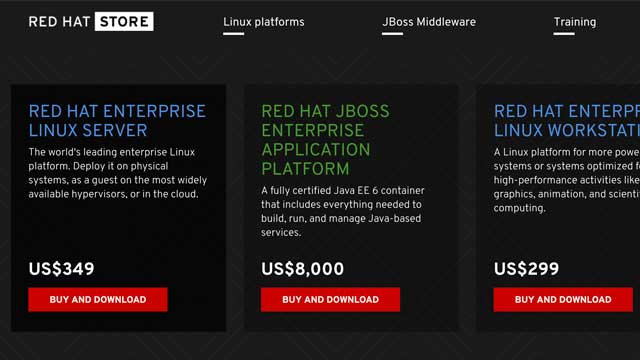
Customer Portal / Red Hat Store integration
New customers can now access the Red Hat Store directly from Red Hat Subscription Management (RHSM) and more easily purchase subscriptions for common products.
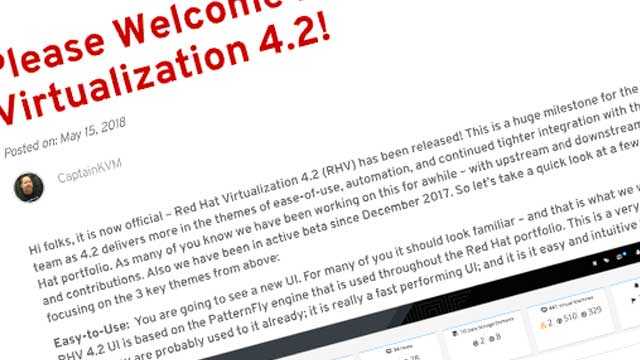
Better support for your virtualized workloads
Red Hat Virtualization (RHV) 4.2 includes new and improved features that continue to deliver more value and performance. An example of this is the new Red Hat Virtualization Suite, a bundle of RHV & CloudForms. The RHV Suite affords customers an easy on-ramp to virtualization and management for their traditional enterprise applications.

Integrated cluster monitoring and metrics with Red Hat OpenShift 3.10
Starting with OpenShift 3.10, Administrators can deploy Prometheus on an OCP cluster, collect Kubernetes and Infrastructure metrics, and get alerts. Administrators can see and query metrics and alerts on the Prometheus web dashboard, or they can bring their own Grafana and hook it up to Prometheus. Hawkular remains the supported metrics stack for OCP 3.10. Prometheus is generally available in OCP 3.11.

Resolved load-balancing and high-availability problems
Customers experienced high-availability problems using a two-node setup for Red Hat Update Infrastructure (RHUI) and Red Hat Gluster Storage. The RHUI team made it easier to avoid negative fail-over scenarios by adding more CDS nodes.

eBPF tracing in Red Hat Enterprise Linux 7.6 Beta
The RHEL 7.6 Beta release enables eBPF for kernel tracing use cases. This allows kernel tracing without inserting custom built kernel modules to the kernel. RHEL 7.6 Beta also comes with many pre-built tracing tools developed using eBPF in bcc-tools package.

Snapshots/rollbacks for Red Hat Enterprise Linux in-place upgrades
The next version of tooling for RHEL 6 --> 7 in-place upgrades (released at the same time as Red Hat Enterprise Linux 7.6) will include the option to create a snapshot of the system and roll back into it if upgrade fails.

Improved support for diverse workloads in Red Hat OpenShift 3.10
OpenShift 3.10 strengthens support for intelligent, compute-intensive workloads.These applications require more explicit access to and management of compute resources. OpenShift 3.10 delivers this through features such as the Device Manager plugin, CPU management to optimize performance, and Hugepages to manage applications with high-memory requirements.

General availability of Red Hat Ansible Engine 2.7
Newly released customer-requested features include a new reboot plugin for Linux hosts, native types in jinja templates, file locking mechanisms on file writes, and an ignore_unreachable syntax for playbooks.
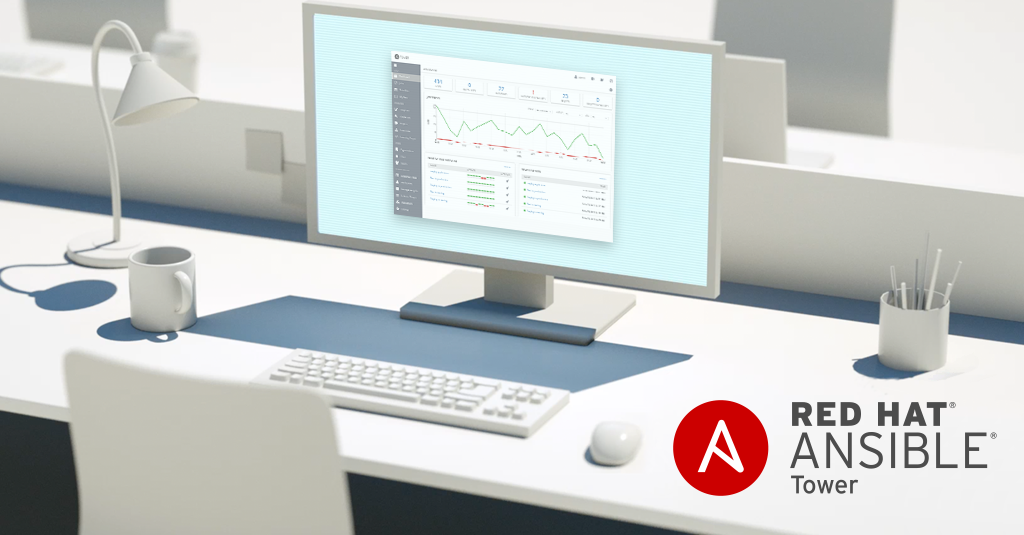
Red Hat Ansible Tower 3.3, the latest release in our automation platform for enterprises.
Tower 3.3 brings a variety of customer-driven enhancements, allowing you to more easily control and delegate automation, integrate into your existing tools and processes, and scale automation across your enterprise.
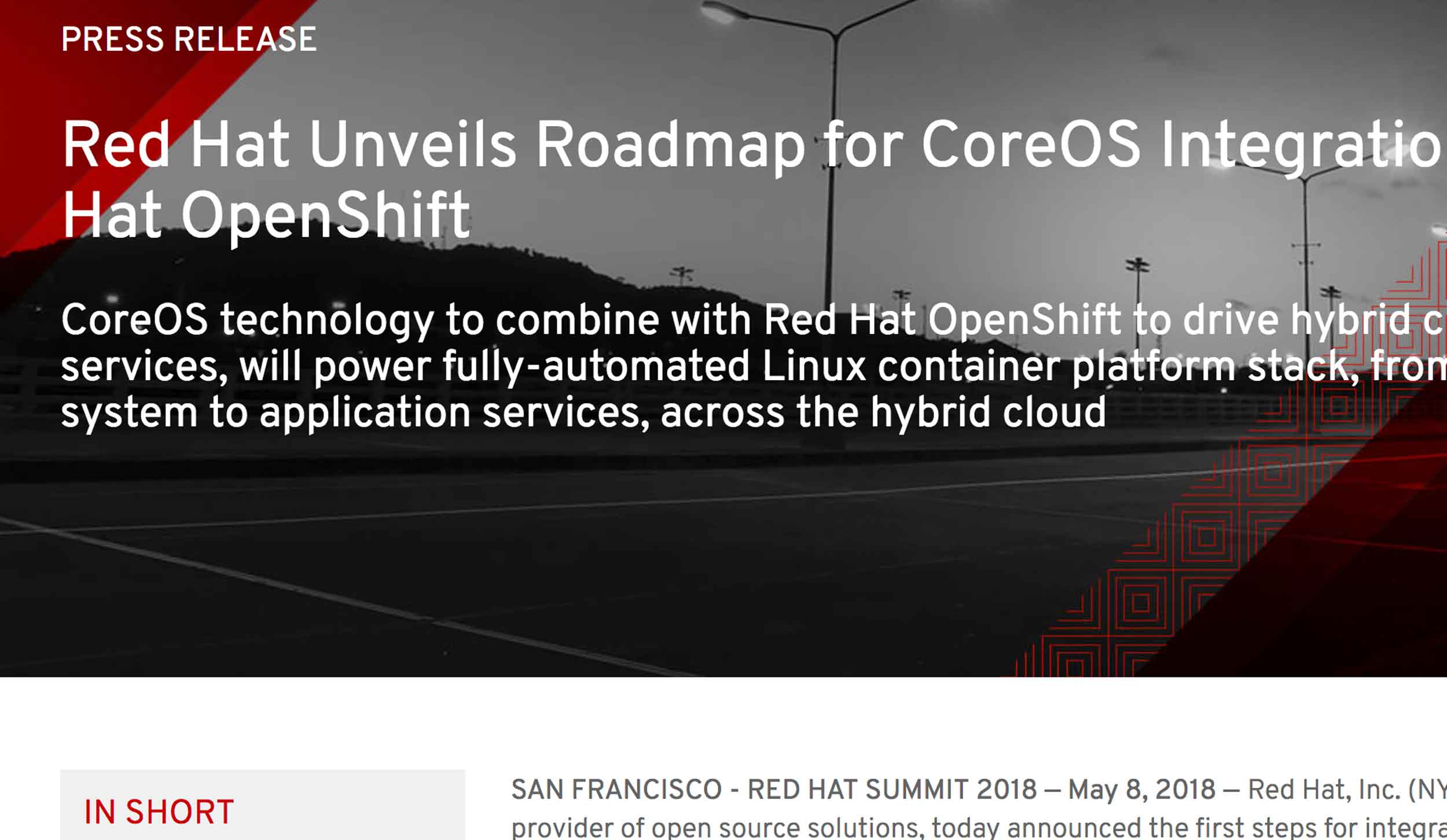
Automated upgrades in Red Hat OpenShift Container Platform
In OpenShift 3.9, the installer now automatically steps the control plane from 3.7 to 3.8 to 3.9 and node upgrade from 3.7 to 3.9. OpenShift 3.9 also addressed 17 install issues. CoreOS Tectonic is strong in both automated install and upgrades and in day 2 management. We are working to integrate those features into OpenShift and deliver by end of this year.

A new lab application for upgrading to Red Hat Satellite 6.3
We updated our Customer Portal Lab application for the Red Hat Satellite 6.2 to 6.3 upgrade path. Customers choose their specific deployment architecture and are only shown documentation relevant to their installation, helping to streamline their operation.
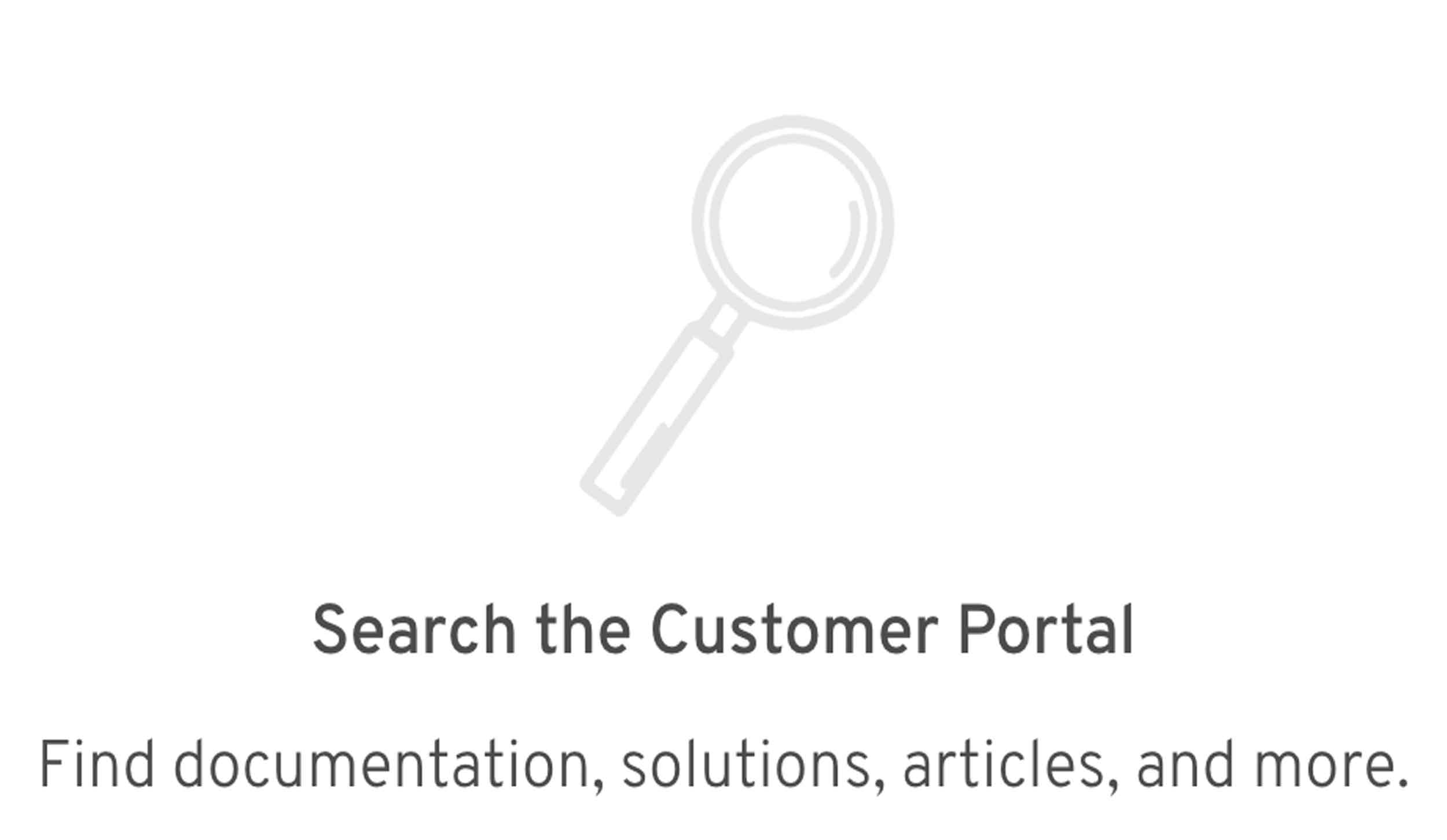
Improved search functionality provides a more comprehensive search experience
New Customer Portal search functionality includes faceted search, the ability to filter searches, and the ability to more easily discover specialized browse pages. All improvements are based on customer feedback.
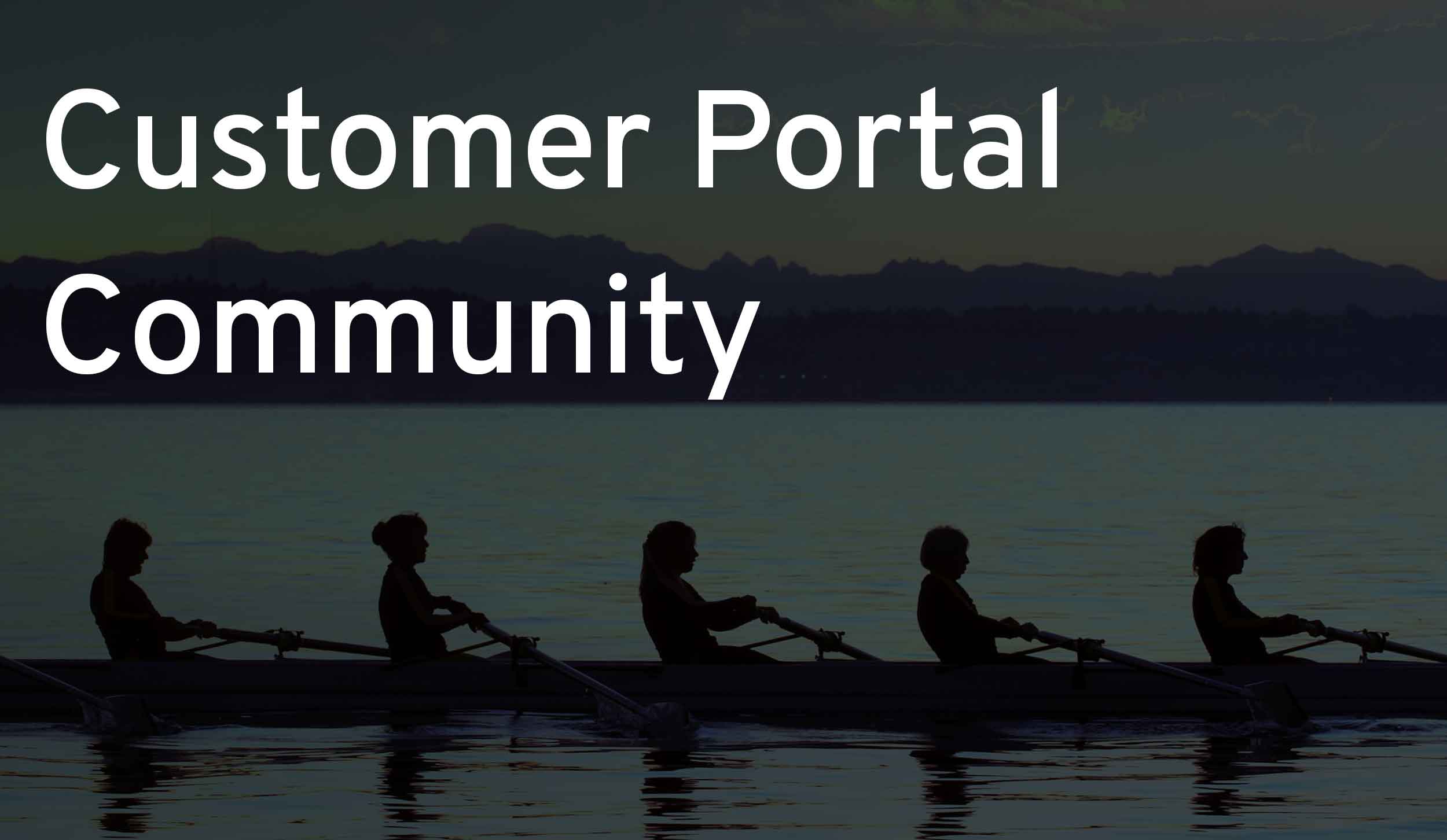
An all-new hub page for our customer community
Highlighting the latest and most active discussions from everywhere on the Portal, the page also recognizes our most engaged contributors through leaderboards and a featured member section. Plus, you can check out recent Red Hat blog posts and learn about upcoming events.

Solution Engine
Solution Engine connects you to the right information, enabling you to resolve issues quickly and efficiently. This means reducing the need to open support cases for issues you can solve on your own.

Red Hat Guide to Linux Containers
There's now an online guide to Red Hat container-related content in the Customer Portal. Links to content are organized into container-related procedures, topics, products and services. This content is available as documents, blogs, videos, articles, and more.

Trust Red Hat
Red Hat is committed to protecting customer data and privacy. The new Trust Red Hat page consolidates our data security information—including product security, regulations, policy, and privacy—all in one place.

Red Hat Training and Certification Improvements
Red Hat Academy announces microservices and devops curriculum release. The Red Hat Academy is excited to announce that we have made some significant updates to our curriculum offerings to include courses that are aligned to topics in devops, container management, and Java EE.

systemd and Red Hat Enterprise Linux Upgrades
Specific changes have been made to the in-place upgrade tool that provides additional insight around systemd when upgrading to RHEL 7. Also, the in-place upgrade tooling has been enhanced to remove networking issues associated with the upgrade to RHEL 7 and systemd/udev so that networking keeps working after upgrade to RHEL 7.
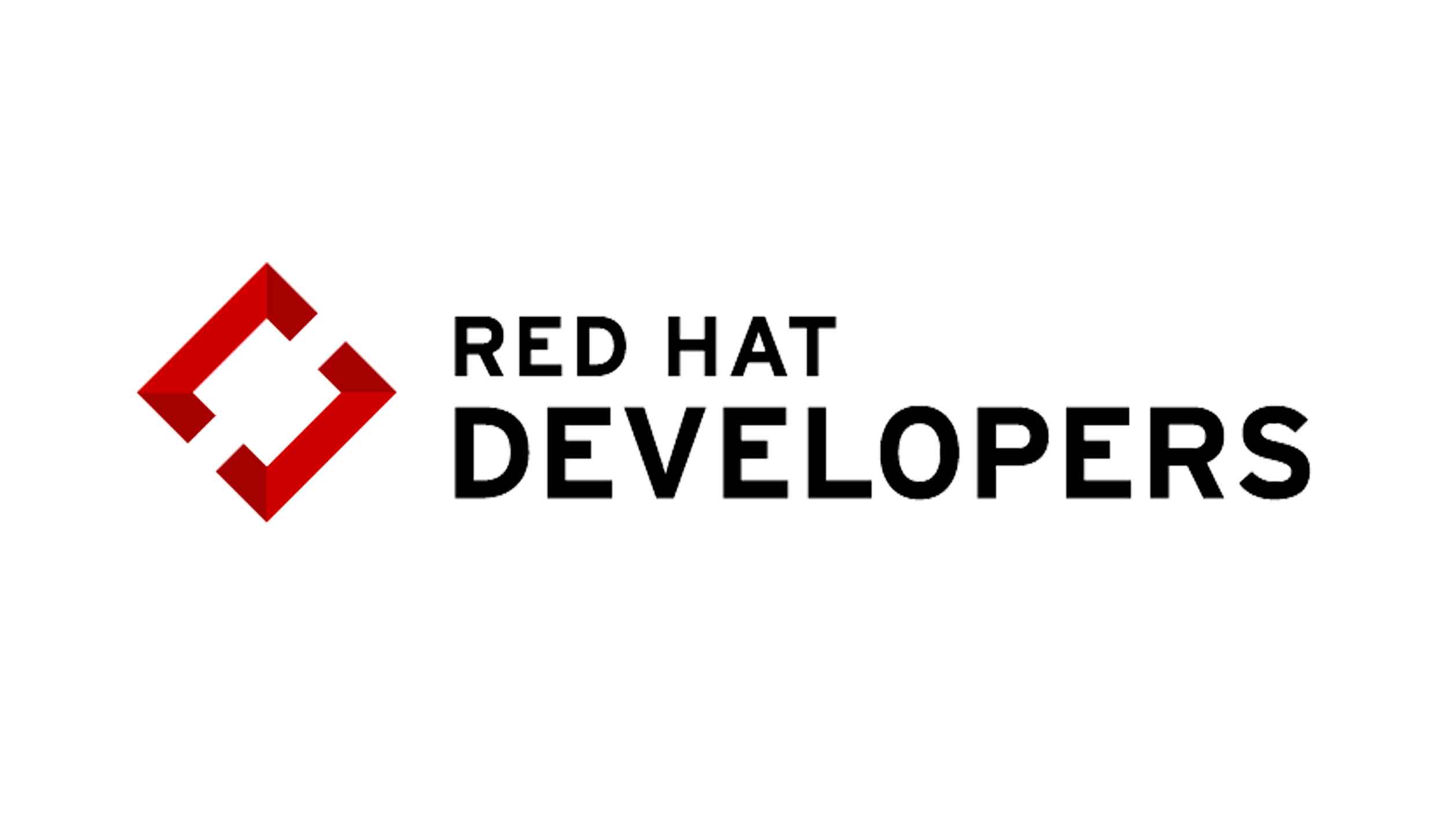
New Developer Tools
Red Hat is pleased to announce additions and updates to our suite of developer desktop tooling products, including Container Development Kit 3.4, JBoss Developer Studio 11.3, and our DevSuite 2.3 installer. These updates are a continuation of our efforts to increase developer usability, while adding new features that matter most for users of Red Hat platforms and technologies.
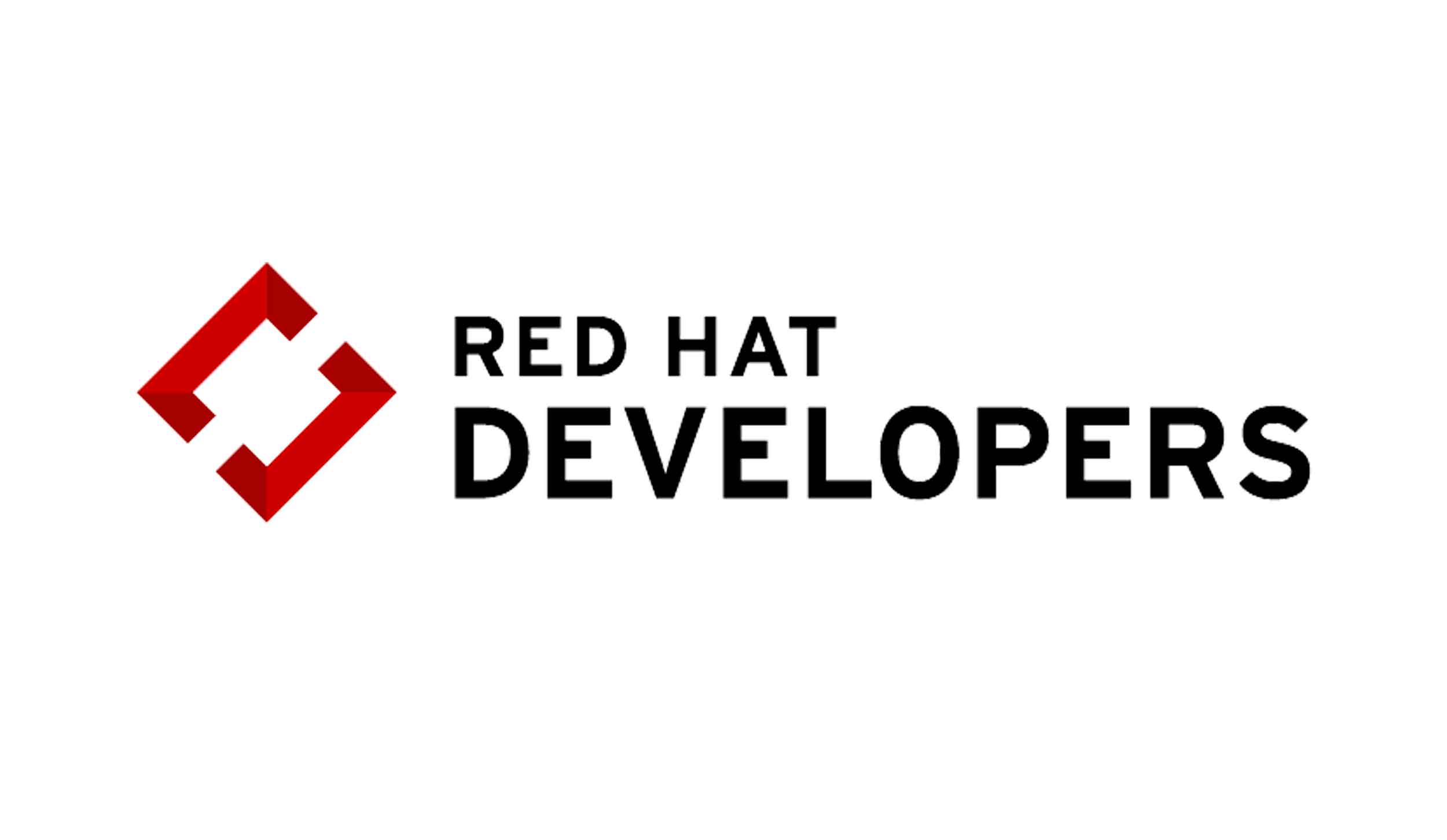
Red Hat Software Collections
The newest versions of databases in Red Hat Software Collections utilize the concept of -syspath packages, which allows users to use the RPM packages as any other package (like the files are in standard paths).
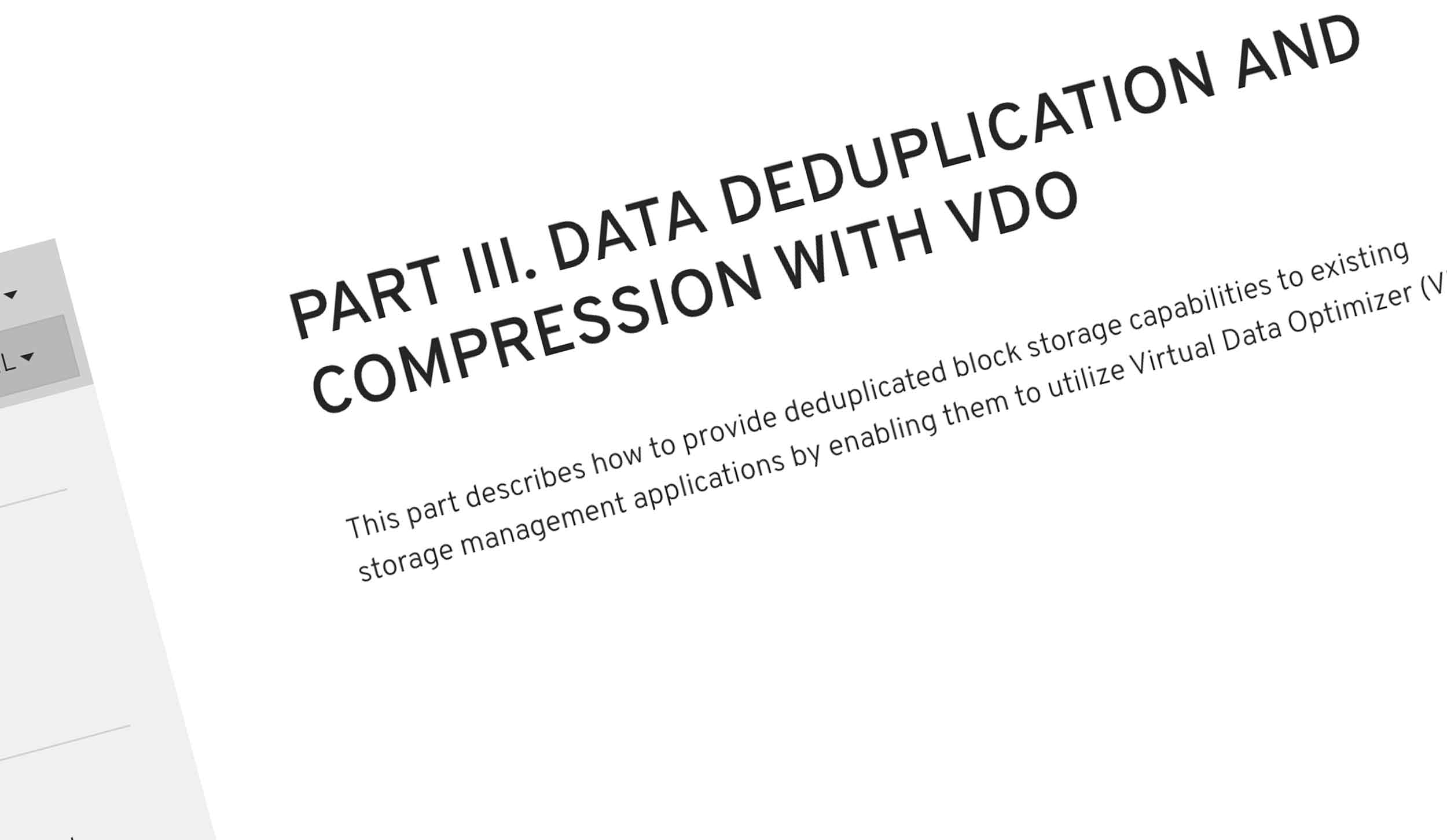
Virtual Data Optimizer increases the effective capacity of primary storage and lowers costs
Virtual Data Optimizer (VDO) is a new Linux device mapper module that adds data reduction capabilities to Red Hat Enterprise Linux. VDO uses data deduplication and compression techniques to shrink data as it is written to storage.

Red Hat Cloudforms Improvements
Last quarter, we reported that we had added numerous performance improvements in collaboration with customers to Red Hat CloudForms 4.5 and 4.6. At that time, we were awaiting erratas and releases of those versions. Now that those two versions have been released and implemented with multiple customers, we can report that the number of customer cases related to performance has dropped precipitously.

New product and documentation pages for Red Hat Container-Native Storage
Customers reported difficulty locating product-specific information and user documentation. As a storage integration solution (Red Hat Gluster Storage + Red Hat OpenShift Container Platform), documentation was delivered on both the RHGS and OCP pages, but no central product page was available in the Customer Portal to access information specific to Container-Native Storage releases, downloads, or support policies. Red Hat resolved this by delivering a Container-Native Storage product page with the 3.9 release with product information and dedicated documentation.
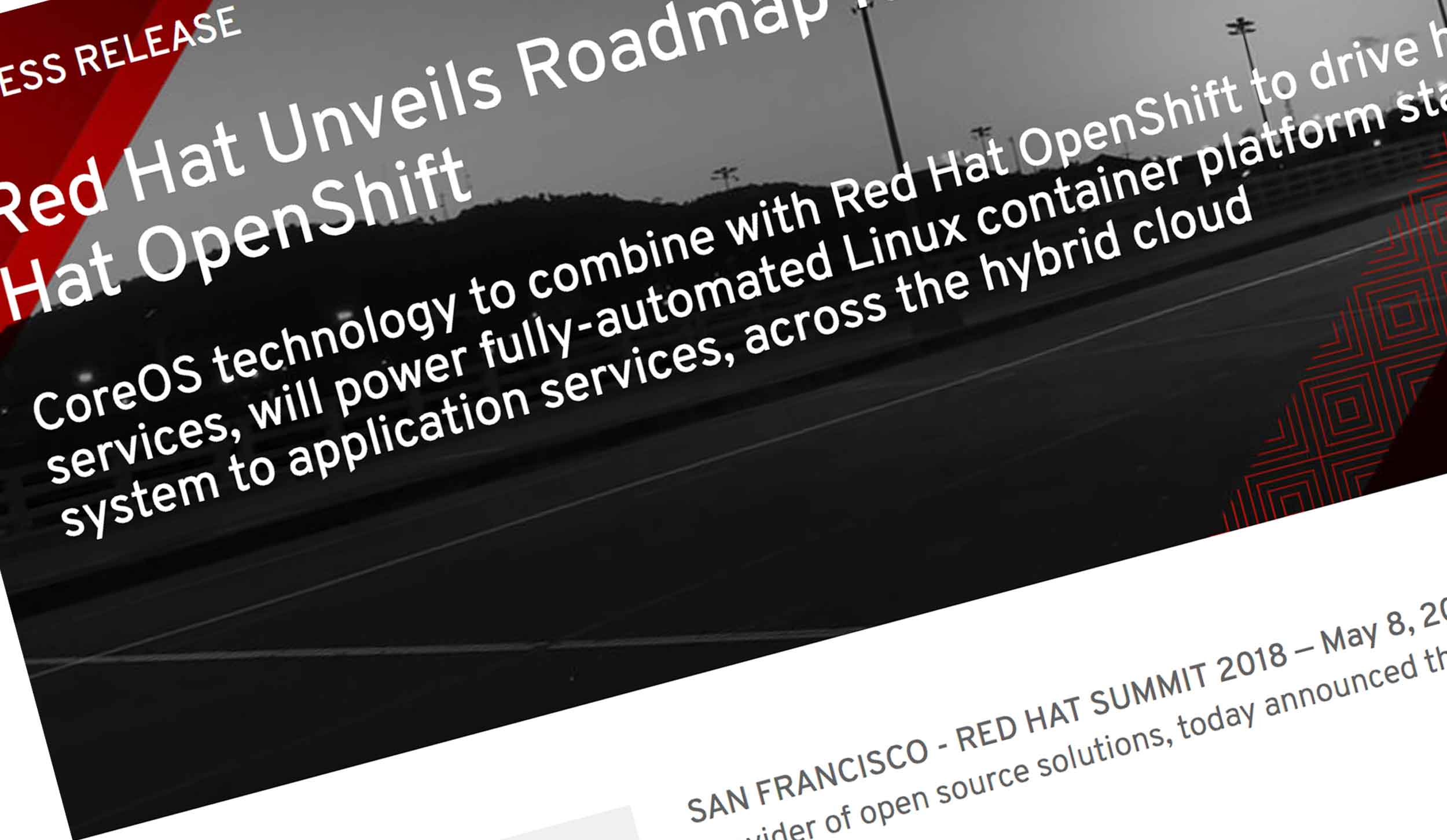
The OpenShift.io customer scenarios
The Red Hat Product Experience team regularly collaborates with QE in the OpenShift.io (OSIO) workspace, taking part in coordinated “live user” tests of our hosted product. We frequently open issue trackers throughout such exercises and these go into the current release train for the product. We also collaborate with the documentation team every release cycle (in the OSIO) to ensure documentation is useful and accurate. Our hands-on experience lets us offer insights that other stakeholders won't have.
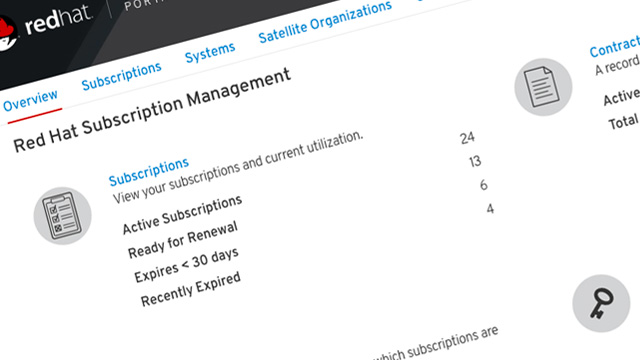
Subscription Renewals Process
To make renewing easier, we’ve streamlined relevant information and added functionality to Red Hat Subscription Management (RHSM) enabling a faster, more consistent renewal experience. View your subscriptions eligible for renewal and click the “Renew” link to begin the process.
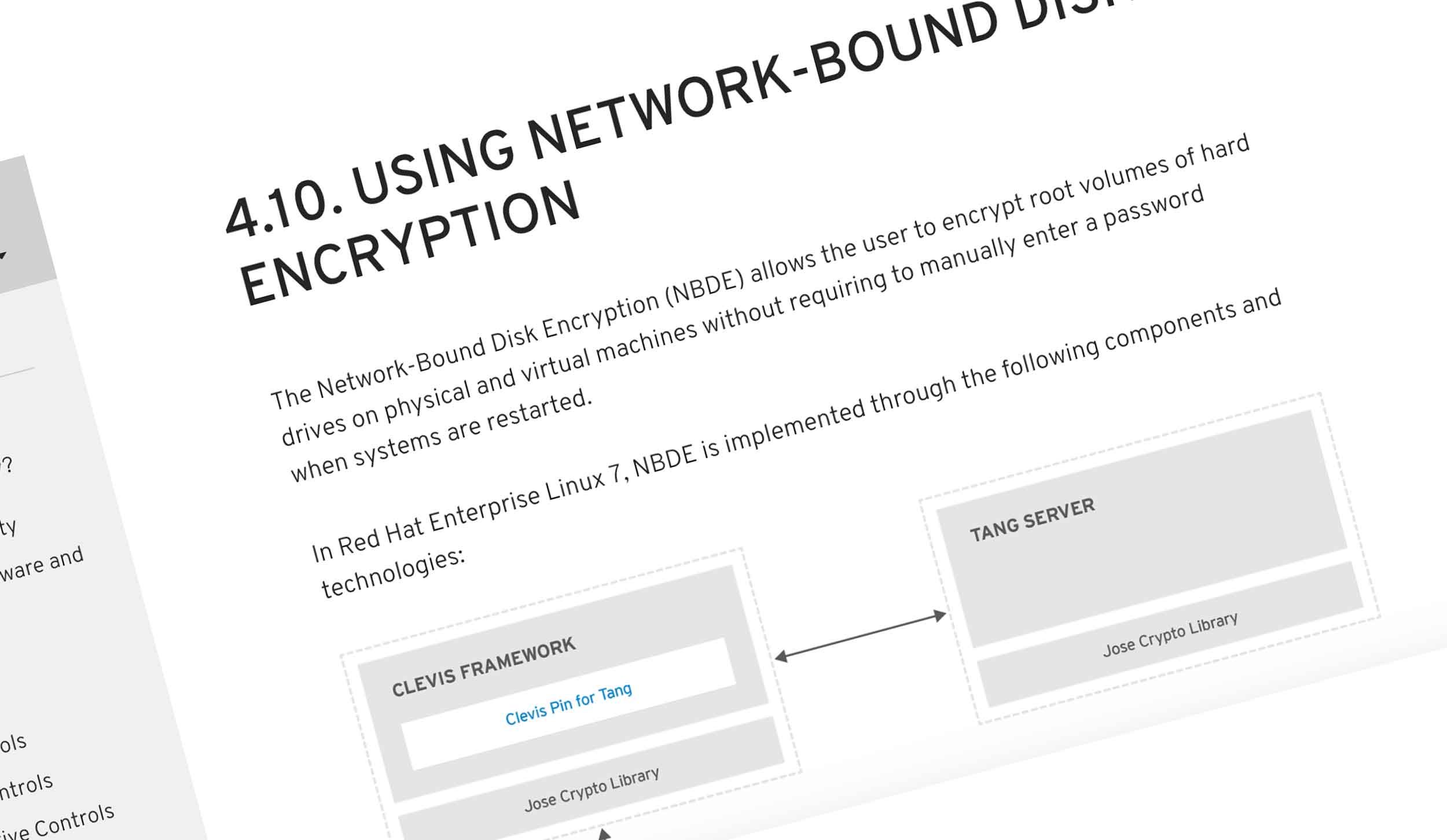
Network Bound Disk Encryption
Secondary LUKS volumes can be encrypted and bound to the network service called Tang through the client side framework called Clevis. The volume is encrypted, but can be automatically decrypted only when the network service is accessible. This addresses the problem of a midnight server reboot when no one is present to type the unlocking password. If the volume leaves the environment boundary and does not have access to the network server, the volume is not decryptable unless the user types a previously defined password.
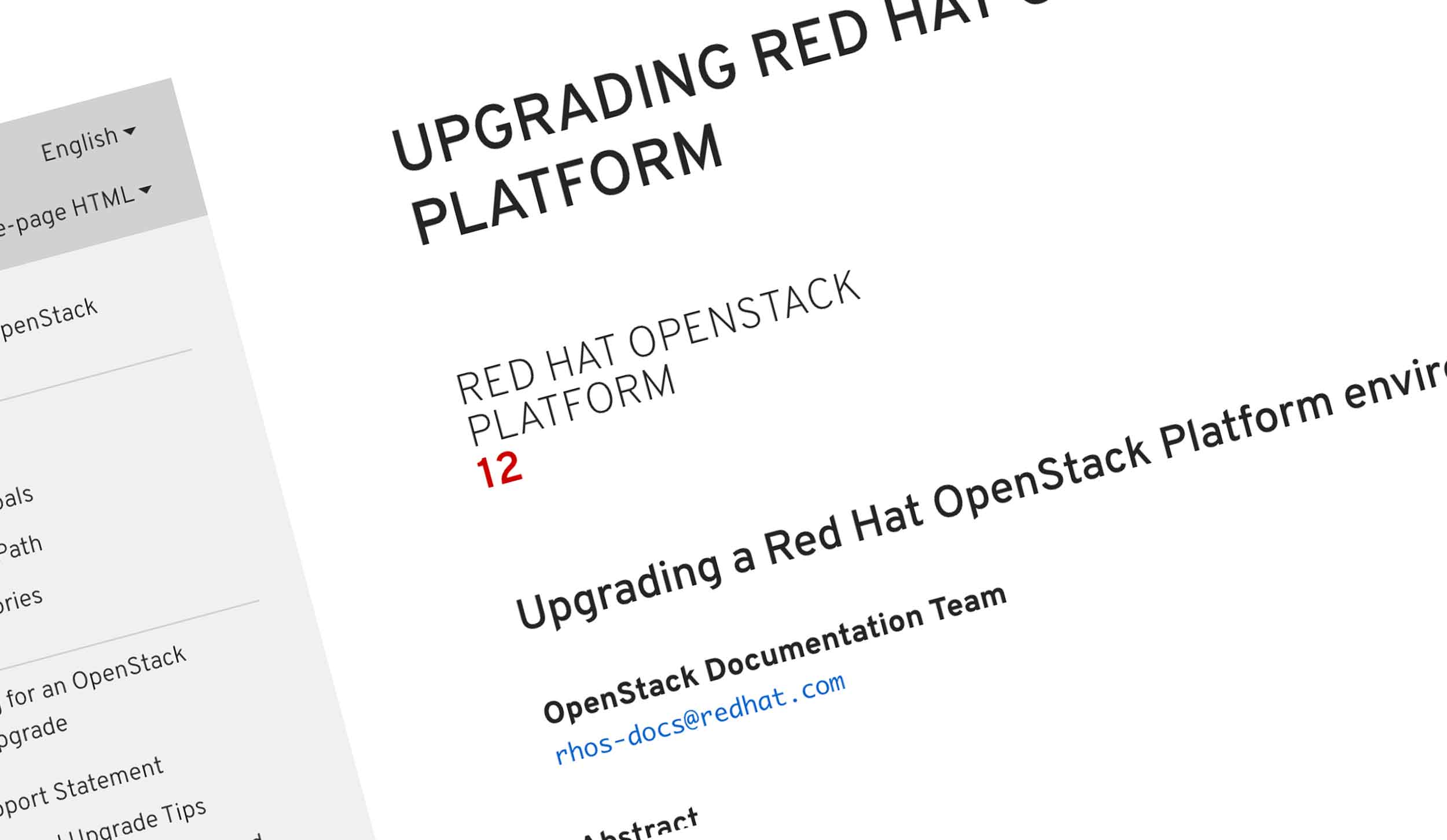
Openstack Upgrade Validation Steps added to Upgrade Documentation
Pre-upgrade validations for undercloud (section 2.3) and overcloud (section 2.4) were added to Red Hat OpenStack Platform 12 documentation. The validations were gathered from Red Hat Support's experiences with customer updates and upgrades. These were added as basic checks to help customers ensure they are ready for an update/upgrade and serve as a “smoke test” for OSP clusters for any occasion.

New installation/upgrade workflow matrix in Container-Native Storage 3.6 Deployment Guide
Customers indicated confusion within the documentation to deploy Container-Native Storage and OpenShift Container Platform. The documentation team improved the experience by adding specific workflow content in the CNS 3.6 Deployment Guide, helping customers better understand which deployment tasks are required based on their existing environment and objectives.

Red Hat CloudForms Performance Improvements
Customers in larger environments were experiencing high memory usage. We saw a pattern in cases and over the course of six months, collected logs from multiple customers. We addressed immediate issues by tuning the Red Hat CloudForms Appliance together with the customer. Once we found the true source of the problem, we fixed and added performance improvements, all of which are available in upcoming errata for Red Hat CloudForms 4.5 and 4.6.

"Performance Tuning Guide" published with Red Hat JBoss EAP 7.1
This new guide was created to meet customer requests for information about optimizing the performance of JBoss EAP deployments. The content provides optimization recommendations for common JBoss EAP use cases as well as instructions for monitoring performance and diagnosing performance issues.

Red Hat JBoss Server Migration Tool released
Migrating an application server configuration is a complex task. The JBoss Server Migration Tool released with Red Hat JBoss Enterprise Application Platform 7.1 automates migration of JBoss EAP 6.4 and 7.0 server configurations to JBoss EAP 7.1. For detailed information, see “Using the JBoss Server Migration Tool”.
Pagination

